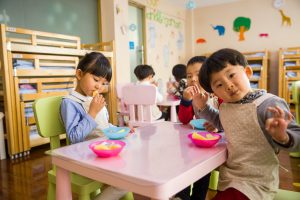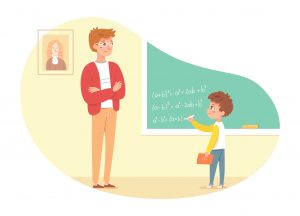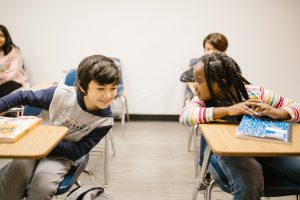Nurturing Confident Communication: A Guide to Integrating Socio-Emotional Learning in Education
“What the educator does in teaching is to make it possible for the students to become themselves.”
Paulo Freire
Socio-Emotional Learning (SEL) is increasingly recognized as essential for effective communication and language learning. However, many educators find the integration of SEL into curriculum design to be a challenging task, often due to its perceived complexity. In this blog post, we invite educators to reflect on this challenge, emphasizing the creation of conditions that support confident communication in the classroom and, ultimately, in the wider world.

Defining Confidence
In this proposed learning context, confidence is defined as a child’s belief in their ability to rely on themselves and others. It involves appreciating their emotions, skills, abilities, and strengths while simultaneously recognizing their challenges, impulses, and frustrations. Teachers play a crucial role in promoting healthy self-esteem from early childhood, nurturing respect and responsibility.
Encouraging confidence in the language classroom provides a space for children to recognize and manage their emotions positively. Confidence in communication empowers children to express themselves in various emotional states, creating an environment where feelings of sadness, frustration, and irritation are as valid as those of love, pride, and curiosity.

The Significance of Confidence
The diverse skills students bring to the classroom can be a valuable resource for learning. Building confidence ensures that every child feels they belong and is equipped to communicate in a variety of situations beyond the classroom. Integrating SEL into the curriculum sheds light on the early development of skills crucial to societal life, such as empathy, constructive conversations, accountability, and effective communication.
Confident communication contributes to structured autonomy and agency, enhancing young learners’ self-awareness and self-esteem, ultimately positively impacting their academic achievement. Despite being a familiar concept, confident communication is not always given the attention it deserves in the classroom. Integrating SEL equips young learners with socio-emotional skills that enable them to approach content and language learning more independently, fostering resilience in the face of mistakes and challenges.
The Teacher’s Role
Teachers serve as influential role models in SEL, shaping learners through their behavior. In SEL, educators can only teach who they are. While perfection is not the goal, teachers aim to cultivate individuals who take responsibility for their mistakes, acknowledge imperfections, feel proud of achievements, and possess a healthy confidence in their ability to learn. Teachers create an environment where learners feel safe to be themselves.

Practical Tips for Encouraging Learning Through Action:
- Encourage spontaneous questions in the classroom.
- View errors as opportunities for learning.
- Communicate clearly and respectfully.
- Celebrate achievements for each learner.
- Acknowledge conflict and tension, guiding children towards connection and solutions.
- Collaborate with other teachers.
- Promote group work and collaboration.
- Foster a belief in continuous development and learning.
The Importance of Collaboration

Collaborative learning enhances patience, the ability to help others, and the achievement of collective goals. In language learning, collaboration develops skills such as taking turns, asking questions, active listening, and seeking help. Collaboration not only builds socio-emotional skills but also expands learners’ potential beyond their comfort zones, fostering a sense of belonging.
Ideas for Collaboration:
- Collaboratively build and act out stories.
- Develop projects together to explore the world and build knowledge.
- Engage in meaningful group activities that reflect the learners’ identity.
- Establish routines that include SEL development.
- Teach positive language for giving feedback and self-assessment.
Closing Thoughts
Teachers, as dreamers and believers, play a pivotal role in the non-linear development of socio-emotional skills. Education is a process, and consistency is key in helping children face challenges, building confidence in their ability to navigate the complexities of the future. While the true impact may not be easily measurable, the integration of SEL into curricula shapes the environment children will build. Together, educators and students embark on a journey towards a better world.
Download the PDF of this blog here.

